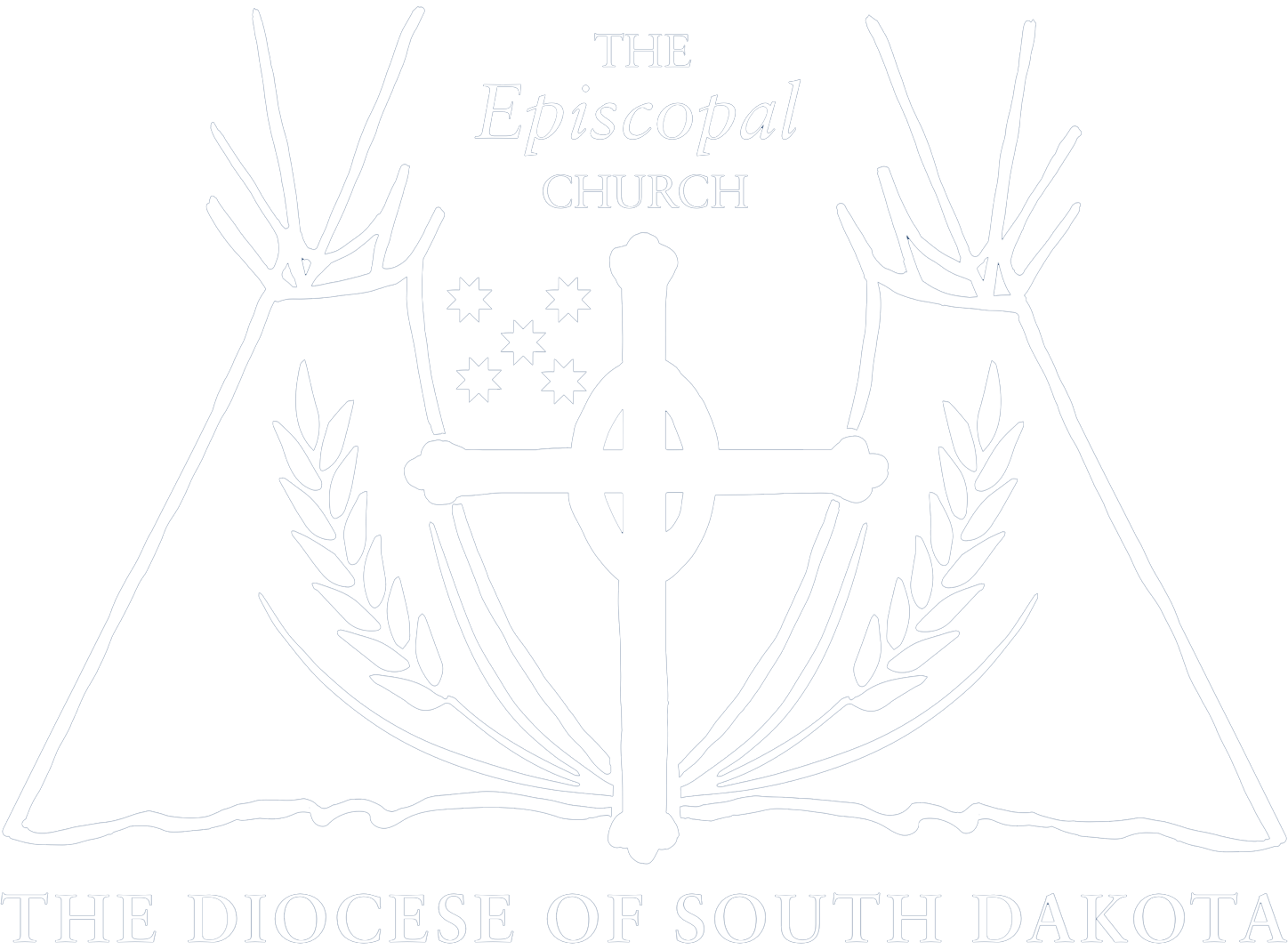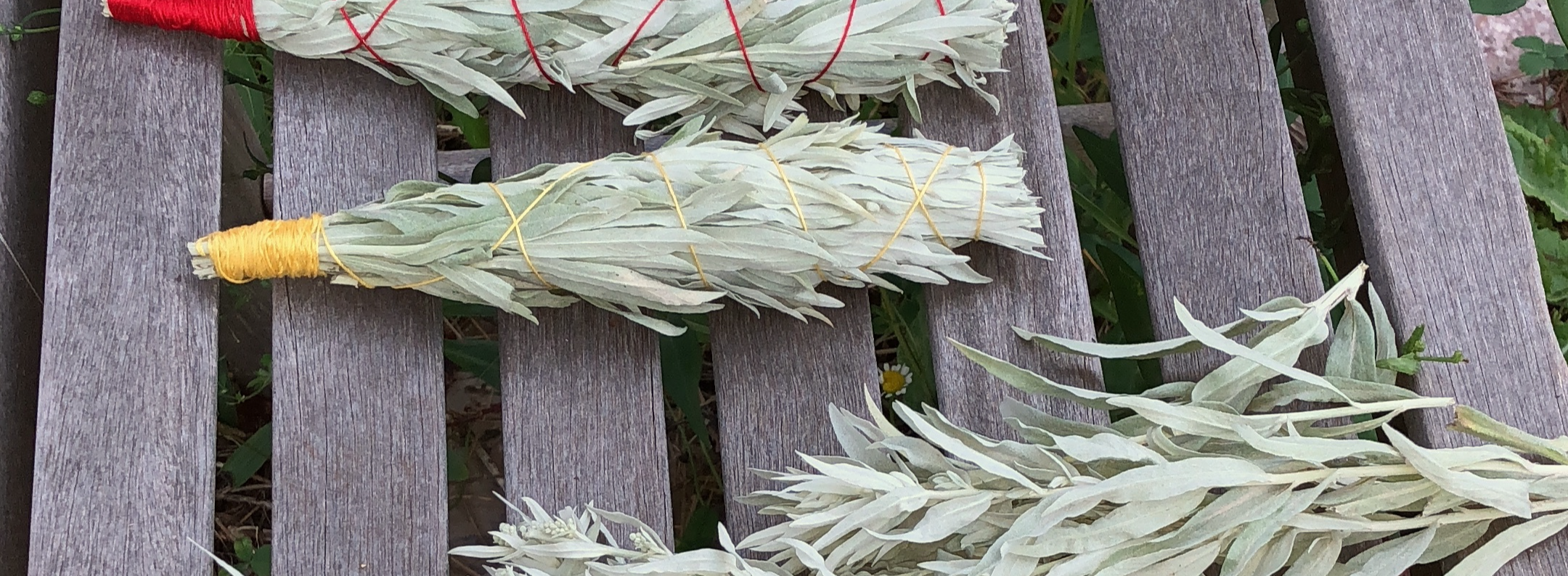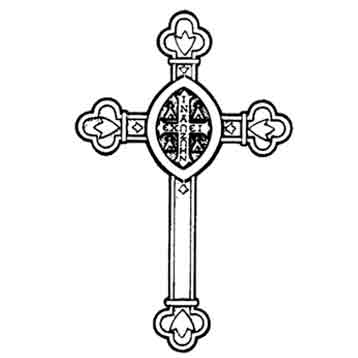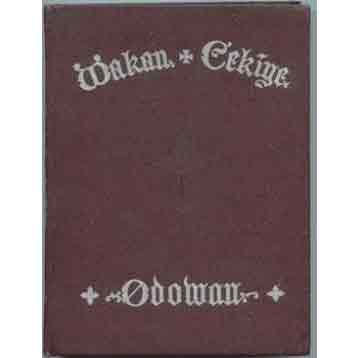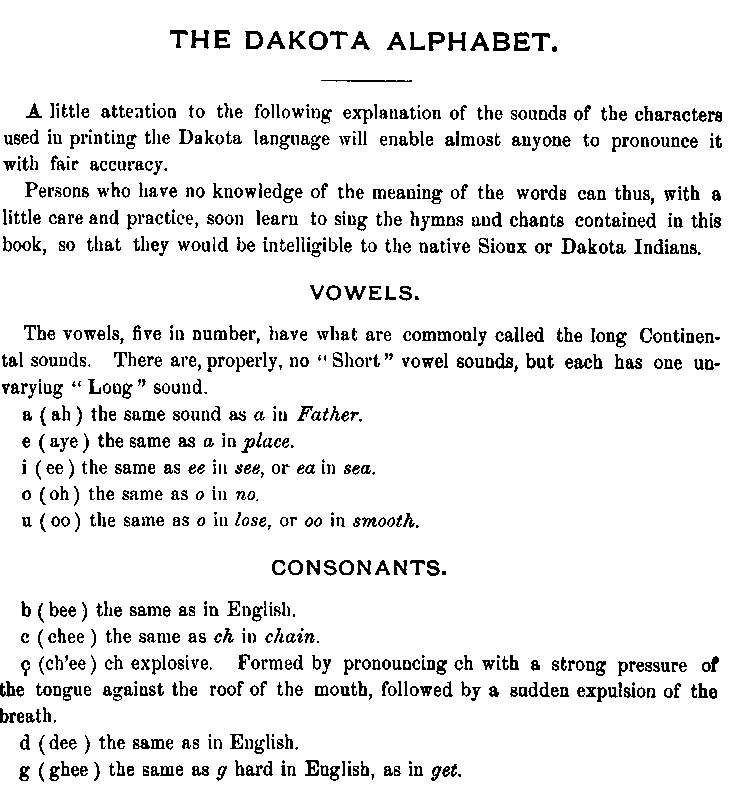Certificates of Baptism and Confirmation meant nothing to Indian converts who could not read. Bishop Hare desired to give to those who took upon themselves obligations as Christians some token that would not only mark them as communicants, but also serve as a constant reminder to them of their Christian calling. He therefore in 1874 designed a cross to serve this purpose.
The oval in the center is his episcopal seal. Around its margin in Latin is inscribed “The Seal of William Hobart Hare, by the grace of God Bishop of Niobrara.” The Greek letters on the cross, which quarters the oval read, “That they may have life.” In each angle of the cross is a tipi surmounted by a small cross. The seal signifies that Christ has come to the Dakotas and gathered them under the protection of the cross, that they have accepted him, and their homes have become Christian homes.
In June 1975, the Niobrara Deanery, by action of the one hundred and third annual Convocation, “in an expression of oneness of God’s family and the love of Christ in His Church,” voted to share with the whole church in the diocese the Niobrara Cross. The fifth annual convention of the Diocese of South Dakota resolved, in October 1975, that it “exhibit the same love and desire for unity by accepting both this Niobrara Cross and the Christian love this gift represents with thanksgiving.”
For the policy on obtaining a replacement cross, click here.
